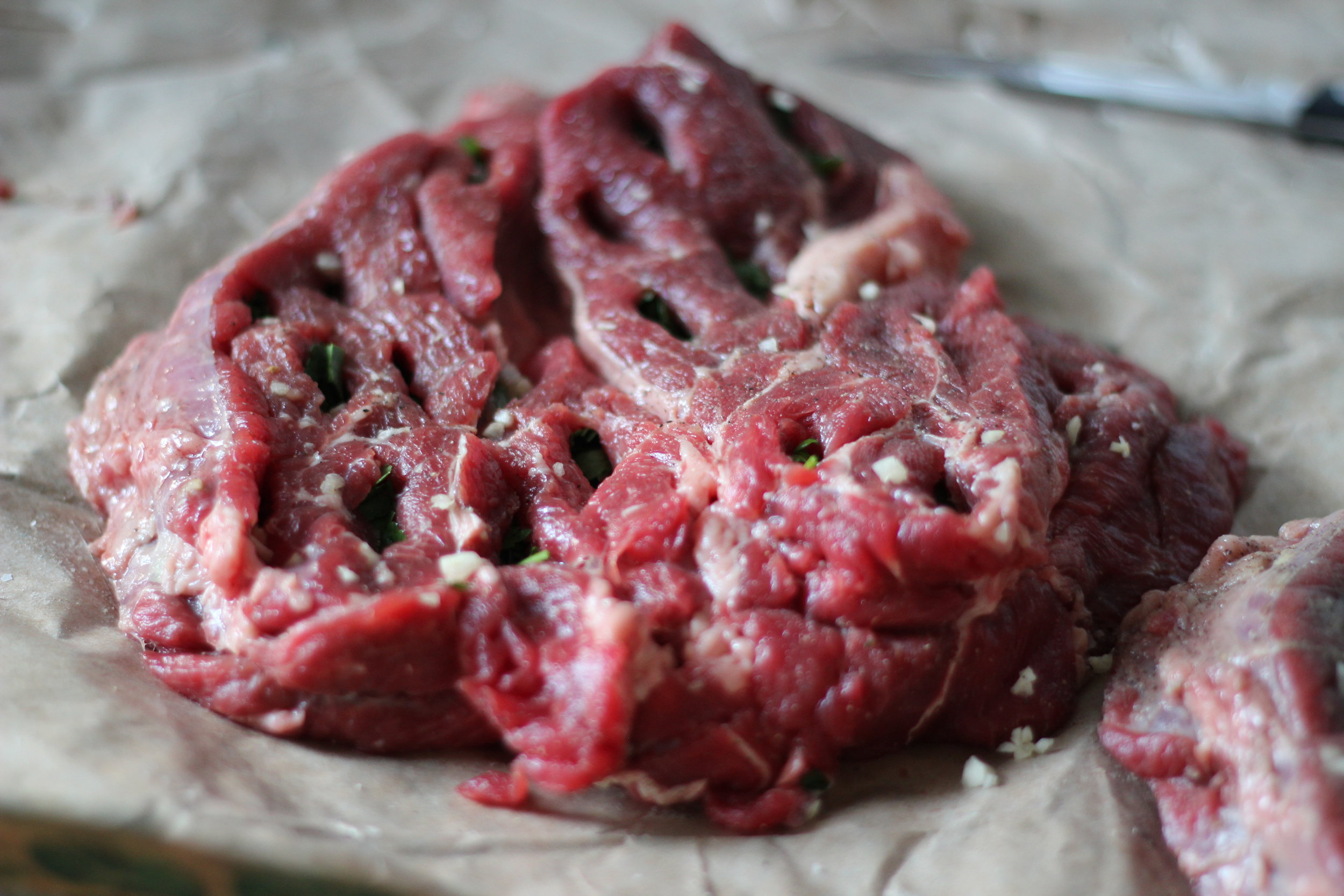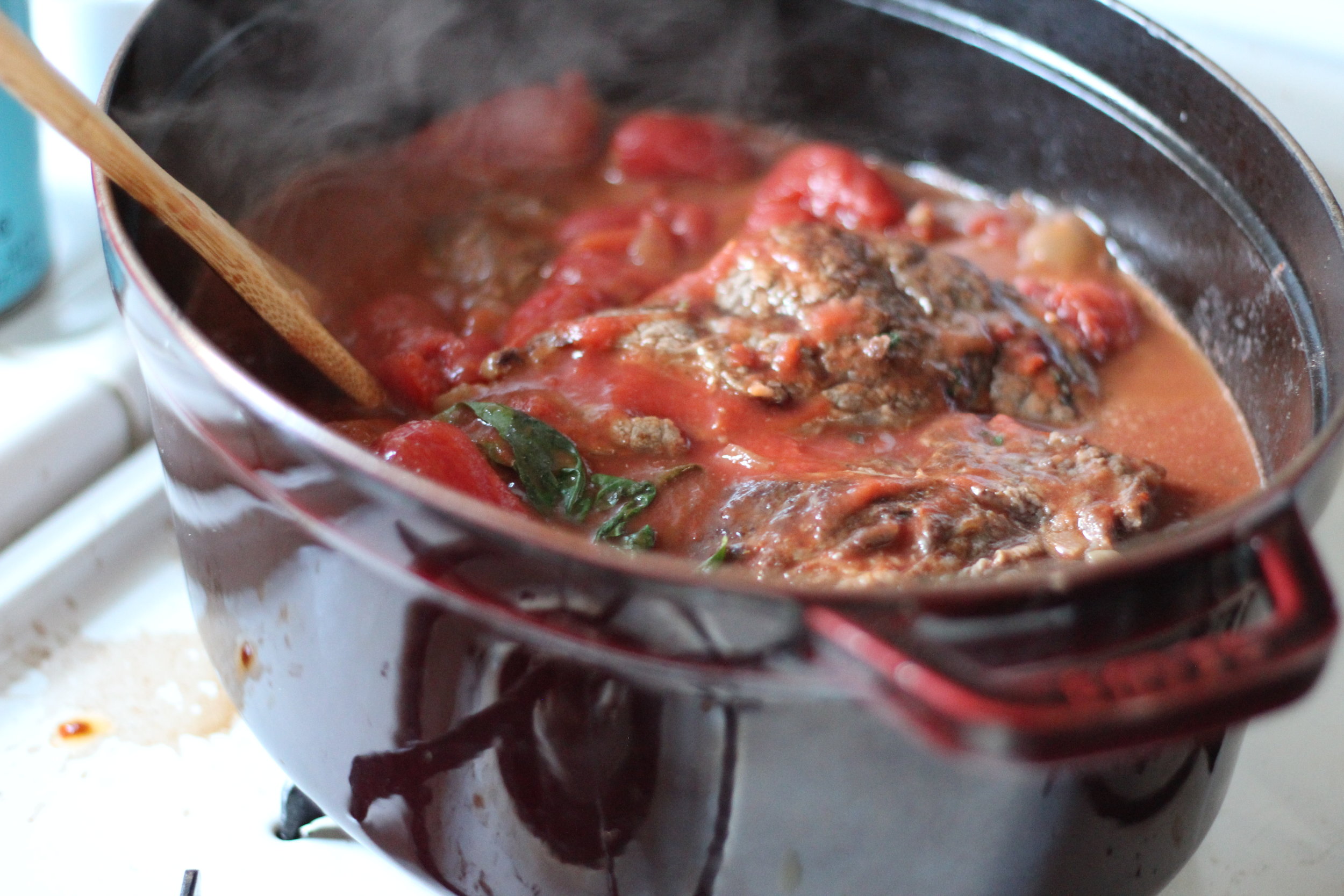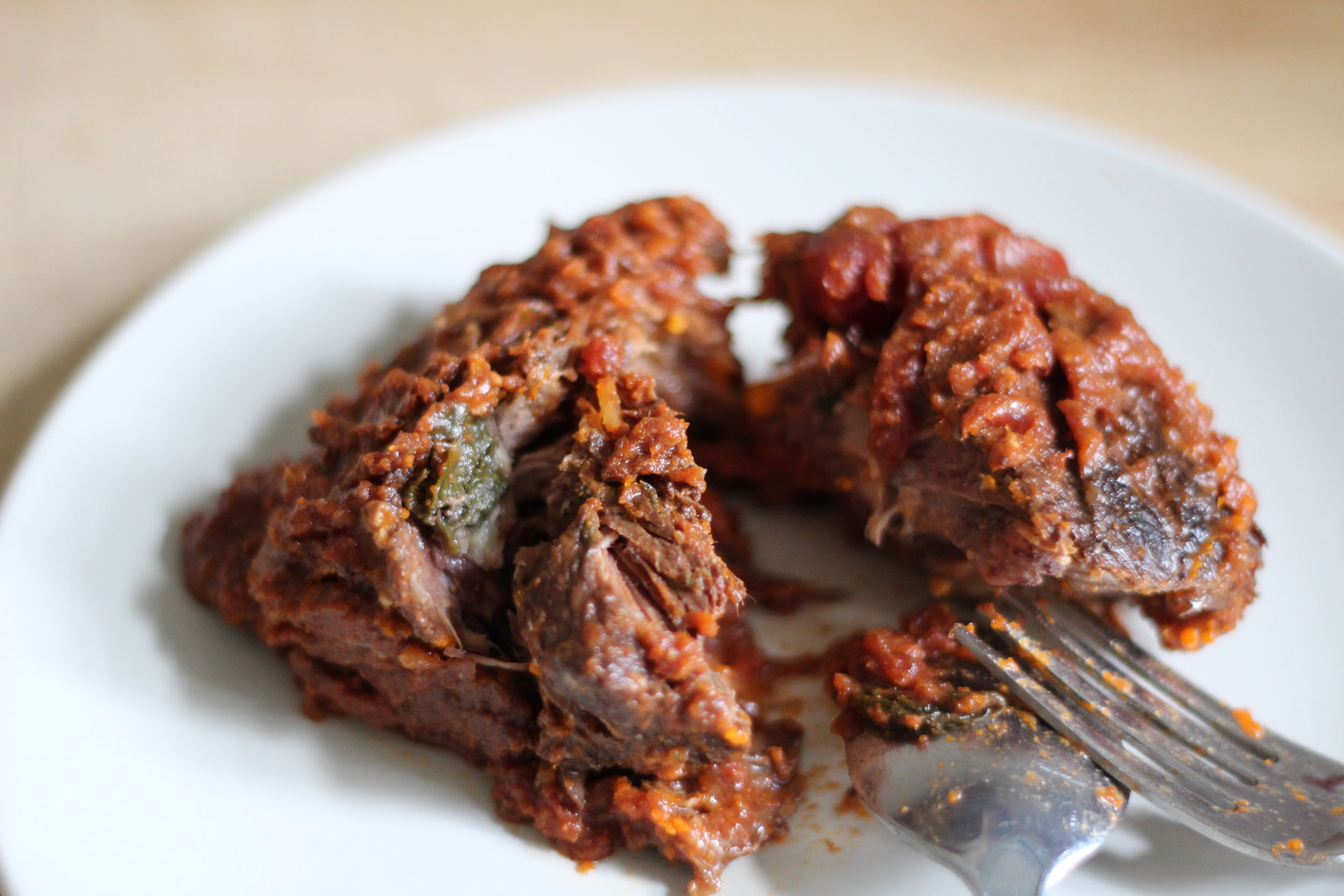Hello!!
It’s been an embarrassingly long time since I last wrote a blog post. I was struck by some deep thoughts while cooking yesterday, so much so that I felt compelled enough to write them up and publish them here! (Also realized I've been in a writing rut and need to get out of it to finish my calendar!) So here you go:
my Italian great-grandparents,
Nicola and Jennie Romito
Yesterday I did a “big cook” for my dear friends Heidi & Adam who live down the street and who recently had a baby. For their baby gift, I gave them two weeks of personal chef-ing, and since sweet Paige is already three months old, it’s about time I got at least a week’s worth of cooking done for them!
From left to right:
- Nicola Romito
- Samuel Lioon (my grandfather, "Pap Pap" who was born in Lebanon)
- Jennie Romito
- Jacqueline Romito Lioon (my grandmother, "Nonna")
Cooking big batches of things for 4 hours straight in my own kitchen is something I actually haven’t done in a long while and I enjoyed it SO much. H&A requested my “surprise meat” that they had eaten at one of my dinner parties a few years ago - it’s a family recipe from my Nonna. It's a part of the meal my immediate family always requested & enjoyed whenever Nonna & Pap Pap had us over for dinner for birthdays. I know the name does not sound very appetizing, but it’s the best, most garlic-y Italian comfort food. It’s beef - a chuck roast - into which you cut little holes everywhere and then stuff them with garlic + parsley “surprises.” You then simmer it for 3+ hours with onions, tomatoes and some red wine until the meat falls apart. When you eat it, you’re sure to get several “surprises” and go home with a full heart and a mouth full of garlic breath. The emotional connection to this meal is so deep that if I close my eyes and imagine hard enough, I can essentially smell it in my brain and feel the comforting joy of one of those dinners at Nonna's house.
One of the most memorable steps at the beginning of my personal cooking journey took place in college, when I decided I should write down and learn to make my favorite recipes from Nonna so I could pass them on to the next generation someday. I’d go to her house on winter breaks and we’d make meatballs, sauce, and surprise meat. The next semester, I arrived at school with a freezer full of my favorite Italian comfort foods.
Yesterday, since I was making surprise meat, I looked back at what I’d written in my old notebook at Nonna’s house so long ago. It was dated June 2010! Seven years ago! It’s crazy and cool to think about what a different cook I am now compared to then.
Immersed in my “big cook” yesterday, as I was cutting and stuffing the little holes in the surprise meat, I got lost in some deep thoughts. My Nonna learned to make surprise meat from her mom - my great-grandmother, Jennie Ferraro Romito, who was born in Italy and came to America in 1912 at the age of 22 with her husband and first son {She bore a total of 12 children(!!!!!) - 7 of whom survived, including my Nonna, Jacqueline, the youngest}. This got me to thinking - did my great-grandmother come up with this recipe herself? Or where did she get it from? Whose idea was it to stuff a piece of meat with all these little surprises? It’s kind of a weird thing to do and pretty time-consuming! My chef brain was thinking "there has to be a way to achieve the same flavor without all the stuffing," but my nostalgic self was more interested in the legacy of this recipe.
My great-grandparents' grave in Newell, Pennsylvania, which is where they lived.
My imagination took off - transporting me to my great grandmother’s first kitchen in Italy - or maybe her mother's kitchen where she learned to make this...? I started thinking about all the ingredients in an Italian setting:
Olive oil. Maybe from the nearby hillsides? Did she make her own? I wonder if that's even possible to do at small scale... (adding it to the research list).
Onions and garlic. Surely she grew these herself. What was the growing season? Did she store them all year?
Beef. I’m sure she knew her butcher… it was probably a neighbor who lived down the street… maybe she even walked past the cows on her way to the village or wherever she went. Chuck roast is a less-expensive cut of beef. I wonder if meat was a special occasion food, or if this was a normal weekday dish…? (Nonna later confirmed on the phone that Jennie generally made this for a Sunday supper.)
Parsley. I feel 99.9% sure she had it growing outside, among lots of herbs.
Red wine. Very likely local, especially since she lived in the Abruzzo region which is where Montepulciano is grown.
Tomatoes. Again, I feel 99.9% positive she grew and canned her own.
Time. She probably spent most of her days in the kitchen. :)
That’s it. Those are the ingredients in this dish. So simple.
Then I started thinking about the the beginnings and the trajectory of this recipe. I imagined her cooking in her kitchen one day. Maybe the piece of meat she was working with on that particular day had some openings in it. (There are usually some natural openings in this type of cut.) Maybe she decided to stuff some herbs in these openings, and then maybe she was bored and just decided to make some additional little holes. And then what if, when she served this for dinner that night, her husband, my greatgrandfather Nicola, was like “Jennie! This is the best meat you’ve ever made!” And then just like that she probably had to make it all the time! (My Nonna says her name was Jennie, but thinks it was an Americanized version of an Italian name - maybe Giovanna or Giacomina.) I wonder what kind of woman Jennie was. What was her own favorite food? Was she stuffing these surprises with all the little kids running around at her feet? Or a baby on her back? What did she do when she came to America? Could she still find all the ingredients?
Then I thought about Nonna learning it from her. And me learning it from Nonna. And me making it for my friends at an “Italian Feast” I threw a few years ago. And Heidi and Adam liking it so much that they remember that and have now requested it 2 years later when they have a new tiny human that they made and they could probably use some comfort food. And now I’m here, stuffing this meat and thinking about my great grandmother’s kitchen. And wishing I could ask her all these questions. And hoping that one day, maybe I’ll get to ask her…? I sure hope so!!
Food is powerful. Especially if and when you make it yourself. I’ll just leave you with that. Oh, and my recipe for surprise meat, just in case you want to channel my Italian great-grandmother and try it out yourself someday. Although, I think I’ll rename it "Carne Sorpresa" since that sounds much sexier :).
Carne Sorpresa (ie, “Surprise Meat”)
Notes:
1. Regarding the name, I do not speak Italian - I just translated this on google and did 5 mins of research on Italian adjective/noun placement. So, if anyone knows Italian & has a better way to say this, please advise!
2. This is my own slightly adapted version based on my Nonna’s recipe. Family members, you may notice small changes.
3. I don't really expect many of you to make this, but if you do, maybe you'll have deep thoughts about your ancestors like I did while stuffing garlic parsley surprises into a hunk of animal muscle!




Ingredients:
- 3-4 lb beef: chuck roast, shoulder, or “English Cut”
- 1 head of garlic
- 1 medium yellow onion
- about 1/2 bunch of parsley
- 1 28oz can tomatoes - crushed, diced, or whatever you have
- about 1 cup red wine
- sprig of basil (if you have it)
- salt, pepper and olive oil
Equipment: dutch oven or large pot; this can also be done in an Instant Pot using the saute function and then slow cooker. Or you could pressure cook it as well - probably 45 mins.
Instructions:
- Set up a nice, clean work surface and then open up your meat. (I like to open the butcher paper carefully and use it as my work surface that I can easily throw away after.) Season meat on both sides liberally with salt and pepper. Then wash your hands.
- On a separate, clean cutting board, smash, peel and mince at least 3/4 the head of garlic, although you will probably need the whole thing. Yes, I know it’s a LOT of garlic. Rinse about 1/2 a bunch of parsley and pat dry, or wrap it in a kitchen towel and shake it out to dry it. Pick off the leaves.
- Bring about half of the garlic and parsley over to your meat station to start. (This is just because you’re going to contaminate the piles of parsley and garlic since you're touching the meat, so by starting with half and then adding more later as needed, just in case you chopped/picked too much, if you have extra you can save it for another use, whereas if you contaminated it with the raw meat, I wouldn’t recommend saving it.)
- With a small, sharp knife, pierce + cut open little holes all over the meat, as many as you can fit. Stuff each one with a little garlic and a parsley leaf or two. When finished with one side, flip it over and repeat the process on the other side. You might think that you’ll hit all your holes, but I rarely ever pierce into an existing “surprise” - somehow there is a lot of room in the meat for surprises! Get more garlic + parsley from your uncontaminated pile as needed, and/or chop and pick more if you run out.
- When finished finished with the meat, wash your hands well and on your clean cutting board, peel and dice the onion.
- Get out your dutch oven or large pot - the meat should fit in the pot so that the largest surface area of the meat touches the bottom of the pot, ideally with some extra room. Heat olive oil in the pot over medium high. Add the onion and cook for a few minutes until soft. Scoot onion to the sides of the pot, add a touch more oil, and add the meat. Allow to brown for a few minutes, then flip and brown on the other side. Add your wine, and let it cook off for a minute or two while you open the can of tomatoes. Then add the tomatoes. Stir/move the meat a bit so the liquids can get to the bottom of the pan. Scrape the bottom of the pan to loosen any brown bits. If using whole tomatoes, break them up a bit with your large spoon.
- There should be enough liquid so that it comes about 3/4 of the way up the meat. If not, you can add a little water or more wine. Add a sprig of fresh basil if you have it.
- Bring to a boil if it’s not bubbling already. Once bubbling, turn down to a simmer - there should be a small, slow but steady bubbling. Put the lid on, leaving a big crack for steam to get out.
- Simmer for 2-4 hours, checking every 30 minutes or so after the 2 hour mark - cook until the meat is starting to falling apart. If the sauce seems too liquidy, remove the lid and simmer it uncovered to let it cook down a bit.
- Optional: When the meat is done, if you like a smoother sauce, you can remove the meat and then blend the sauce with an immersion blender to make it into more of a gravy. Otherwise, keep as is with the tomato and onion chunks.
Serving note: this is a rich and hearty dish. Growing up, we ate it at Nonna’s house along with spaghetti and meatballs and a Lebanese salad (mixed greens with fresh mint, tomatoes, feta, lemon juice, and olive oil). Nowadays, if I was serving this by itself, I might make roasted potatoes and a big salad, or maybe some broccoli or escarole, or perhaps some red-lentil pasta cooked simply with olive oil and fresh herbs. You want accompaniments with lighter flavors to balance out the richness and supremely garlic-y flavor of the meat. Or you could also stick it on a sandwich with some arugula and call it a day.


